
-
Find the right food for your petTake this quiz to see which food may be the best for your furry friend.Find the right food for your petTake this quiz to see which food may be the best for your furry friend.Featured products
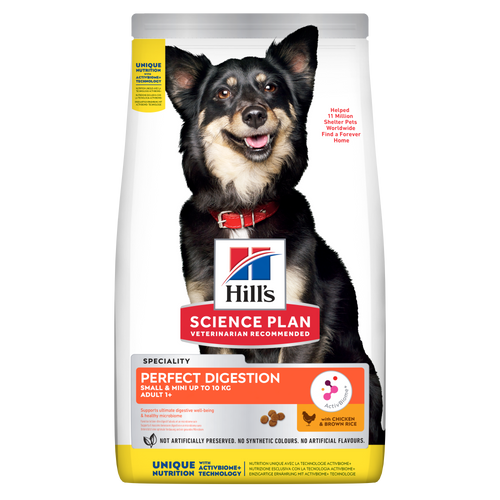 Perfect Digestion Small & Mini Adult Dog Food
Perfect Digestion Small & Mini Adult Dog FoodHill's Science Plan Perfect Digestion Small & Mini Breed Adult Dog Food with Chicken & Brown Rice supports ultimate digestive well-being & a healthy microbiome.
Shop Now Small & Mini Mature Adult 7+ Dog Food
Small & Mini Mature Adult 7+ Dog FoodHill's Science Plan Small & Mini Breed Mature Adult Dog Food with Chicken is a complete pet food, specially formulated with ActivBiome+ Multi-Benefit Technology.
Tailored nutrition to support graceful ageing in small dogs. Specially made with a synergistic blend of nutrients for energy & vigor.Shop Now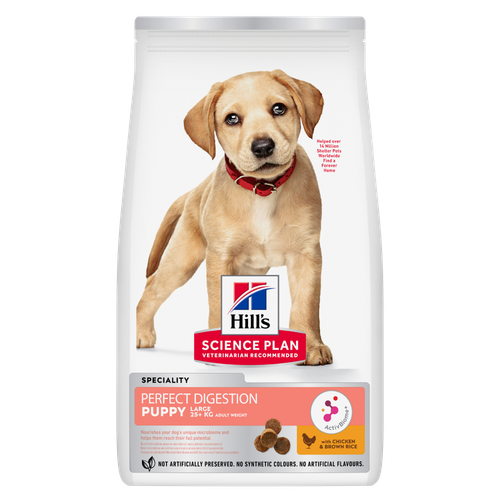 Perfect Digestion Large Breed Puppy Food
Perfect Digestion Large Breed Puppy FoodPrecisely balanced nutrition with Hill's ActivBiome+ prebiotic blend actively contributes to supporting digestive health and overall well-being to help your pet feel their best
Shop NowFeatured products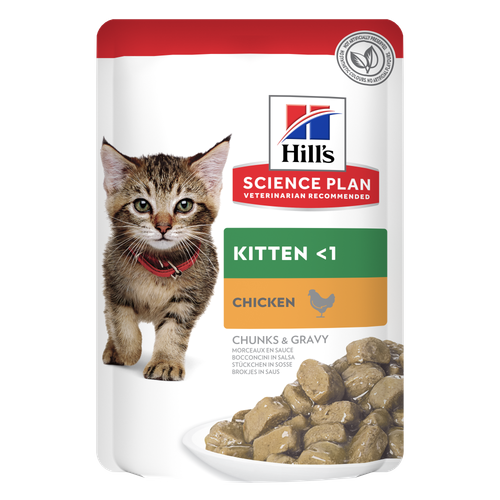 Kitten Food
Kitten FoodTender chicken chunks in gravy for kittens, with omega-3s for healthy eye & brain development and high-quality protein to support muscle growth. With balanced minerals to promote strong bones & teeth.
Shop Now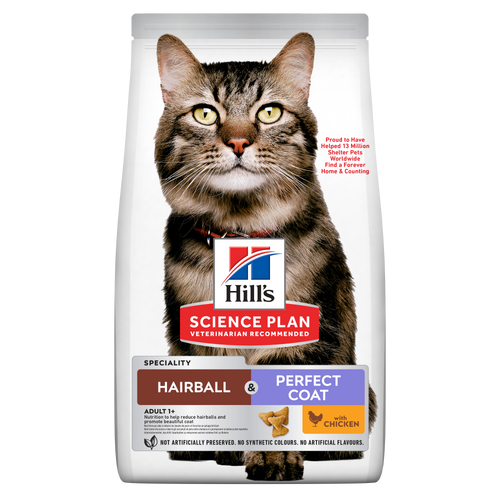 Hairball & Perfect Coat Adult Cat Food
Hairball & Perfect Coat Adult Cat FoodHill's Science Plan HAIRBALL & PERFECT COAT Adult cat food with Chicken is specially formulated to effectively help avoid hairball formation in adult cats while promoting a beautiful coat. Thanks to its mix of essential Omega-6 fatty acids, this food benefits the cat's skin and fur keeping them healthy and shiny. Our Advanced Fibre Technology helps reduce hairballs by naturally promoting their passage through the gut. This food is formulated with high-quality protein for a perfectly balanced, great-tasting recipe.
Shop Now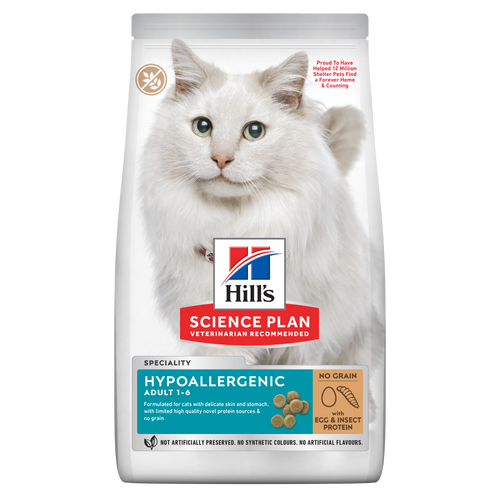 Hypoallergenic Dry Cat Food
Hypoallergenic Dry Cat FoodHILL'S SCIENCE PLAN Hypoallergenic Adult cat food with egg & insect protein is a complete pet food for adult cat 1–6 years old. It's formulated for cats with delicate skin and stomach, with limited high quality novel protein sources & no grain.
Shop Now -
Dog
- Dog Tips & Articles
-
Health Category
- Weight
- Food & Environmental Sensitivities
- Urinary
- Digestive
- Joint
- Kidney
-
Life Stage
- Puppy Nutrition
- Adult Nutrition
- Senior Nutrition
Cat- Cat Tips & Articles
-
Health Category
- Weight
- Skin & Food Sensitivities
- Urinary
- Digestive
- Kidney
-
Life Stage
- Kitten Nutrition
- Adult Nutrition
Featured articles The Right Diet For Your Pet
The Right Diet For Your PetLearn what to look for in healthy pet food & nutrition, including ingredients, quality of the manufacturer, your pet's age, and any special needs they have
Read More Understanding Your Pet's Microbiome
Understanding Your Pet's MicrobiomeLearn what a pet's microbiome is, how it contributes to your pet's gut & overall health, and why nutrition is important in maintaining healthy microbiomes.
Read More Pet Food Storage Tips
Pet Food Storage TipsWhere you store your cat and dog food can make a big difference in the quality and freshness once it is opened. Here are some common questions and recommendations for optimal storage for all of Hill’s dry and canned cat and dog food.
Read More -


With so many types of cat litter on the market today, choosing the right one can be a confusing task. How do you know what is the best cat litter for your feline friend?
The best cat litter is the one that your cat likes and will use. However, it's also important to choose a cat litter that works well for you, too, because you're the cat clean-up crew. Finding the perfect cat litter involves answering questions such as, how do I know what my cat likes? Do I want clumping or non-clumping? Scented or unscented? Should I talk to my veterinarian before switching to a different cat litter? Use this guide to answer these questions and help you select a cat litter that works best for you and your cat.
Considerations to Keep in Mind
If you're bringing home a new cat or thinking about trying a new type of litter for your current feline family member, speak with your vet beforehand to get their recommendations. Then, think about litter characteristics such as texture, absorbency and ease of use.
Texture is particularly important, noted the ASPCA, because cats are sensitive to what litter feels like on their paws. If they don't like the feel of what's in their litter box, they may find a different place to use as a cat bathroom (plants, carpet and sometimes even your bed).


Tasty Tips
Types of Cat Litter
The types of cat litter available on the market vary in terms of consistency, clumping ability and scent.
Consistency Choices
Clay
There are two types of cat litter made from clay: non-clumping and clumping. Clay-based non-clumping cat litter was introduced to the market in 1947, and in the 1980s, clumping cat litter was discovered. Prior to that, cat parents relied on sand (which is why cats can't resist an uncovered children's sandbox). Most cats prefer fine-textured clay litter over other types, said Dr. Pam Perry, a feline behaviour specialist at the Cornell University College of Veterinary Medicine. Clay granules are similar to the soft soil or sand that cats use in the wild. Both non-clumping and clumping litter can produce dust, but some clay cat litters are specifically formulated to produce less dust.
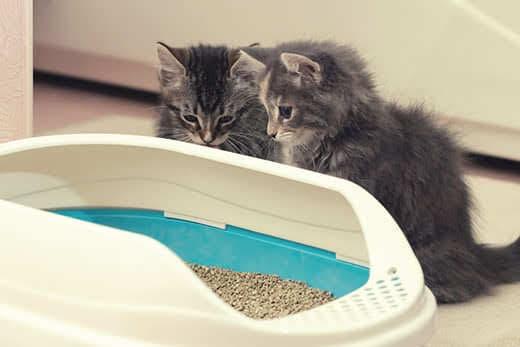 Crystal
Crystal
Made of clear silica gel (just like the little packets of gel that come in a box of new shoes), crystal cat litter is more expensive than other types of cat litter. But it's absorbent, produces less dust than other materials and actively cleans the litter box, which is good news for cats and humans, noted VetInfo. Your cat may not like the feel of the rough crystals, but smoother pearl-like options are available. Like non-clumping clay litter, crystal litter can become saturated and urine will pool in the box. And as with clumping litter, you shouldn't use crystal litter until your cat is beyond the "eating faeces" stage of life. Silica gel can be toxic when ingested by your cat, dog or other pet that may like to play in the cat box.
Other Natural Materials
Many natural alternatives to traditional clay litter are available, including paper, pine, wheat, nutshells and corn. International Cat Care pointed out that "many of these are lightweight, biodegradable and have excellent odour-neutralising properties," making them desirable options. For those humans and cats with environmental allergies and asthma, many natural types of cat litter, such as walnut, come in pellet form, and some natural cat litters, like those made with corn kernels, are clumping, reducing the amount of dust in the air and litter strewn about the house. However, if you or your cat have food allergies or intolerance, read the ingredient labels carefully to ensure the litter is safe to use in your home.
Clumping vs. Non-Clumping Choices
To clump or not to clump? Inquiring cat parents want to know.
Non-Clumping
Non-clumping litter is popular because it's affordable — you can get a giant bag for not much money — and it's great at absorbing urine and odors. With non-clumping clay litter, your cat is less likely to scatter litter around the house because its larger granules don't cling to their paws the way other types of cat litter do. One drawback of non-clumping litter is that it requires switching out the litter completely at least once a week; otherwise, the litter becomes too saturated and urine will puddle at the bottom of the box.
Clumping
Although more expensive than the non-clumping version, clumping clay litter is a popular choice for pet parents because it's easy to use: The litter absorbs the urine into clumps that you can easily scoop up and toss, and then you're done. Because urine doesn't pool in the litter box with clumping litter, cleaning out the box and replacing it with entirely new litter is more of a once-a-month chore rather than once a week.
However, if you're choosing cat litter for a kitten, clumping cat litter should be avoided because of the risk of ingestion. Curious kittens often eat their faeces (an unsavory truth), play in the litter box and lick litter off their paws. Clumping litter absorbs and expands when it comes into contact with liquids, and if a kitten ingests the litter, it can create an intestinal blockage. It's best to take a "better safe than sorry" approach, recommended by Cat Health, and avoid using clumping cat litter until your fur baby's kittenish antics decrease.
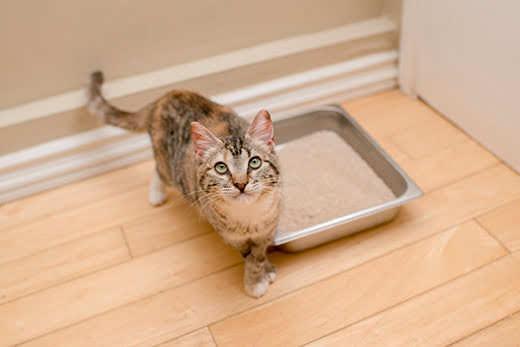 It's a good rule of thumb to avoid clumping cat litter with cats of any age that ingest faeces. If your cat eats their faeces and/or litter, call your vet right away to determine the cause.
It's a good rule of thumb to avoid clumping cat litter with cats of any age that ingest faeces. If your cat eats their faeces and/or litter, call your vet right away to determine the cause.
Scented vs. Unscented Choices
You may prefer the smell of freshly cut lavender in the litter box, but it can irritate your cat's highly developed sense of smell. Cats have about 200 million scent sensors while humans only have about 5 million, noted PAWS Chicago, making cats much more sensitive to fragrances. Cat litters that contain baking soda or carbon don't seem to bother cats too much. But rather than relying on scented products, eliminate odours by scooping out the litter box at least once a day (more often, if you have multiple cats) and about once a week, change out the litter and clean the box with water and baking soda or unscented dish soap. Don't clean the litter box with chemical cleaners or disinfectants, as many of these are toxic to cats. Place a thin layer of baking soda on the base of the box, then add clean litter on top of it to help absorb odour.
A good way to try out a few litters at a time is to set up multiple trays, each with a different kind of litter, to see what is the best cat litter for your furry friend (and what works well for you, too). Because many cats are sensitive to the smell and the texture of a new litter, pay close attention to your cat's litter box behaviour while they're trying out the new litter. If they go outside the box, try another type of cat litter. If the behaviour continues, speak with your vet to discuss your cat's urinary health.


Christine O'Brien is a writer, mom, and long-time cat parent whose two Russian Blues rule the house. Her work also appears in Care.com, What to Expect, and Fit Pregnancy, where she writes about pets, pregnancy, and family life. Find and follow her on Instagram and Twitter @brovelliobrien.
Related products

Hill's Science Plan HAIRBALL & PERFECT COAT Adult cat food with Chicken is specially formulated to effectively help avoid hairball formation in adult cats while promoting a beautiful coat. Thanks to its mix of essential Omega-6 fatty acids, this food benefits the cat's skin and fur keeping them healthy and shiny. Our Advanced Fibre Technology helps reduce hairballs by naturally promoting their passage through the gut. This food is formulated with high-quality protein for a perfectly balanced, great-tasting recipe.

HILL'S SCIENCE PLAN Hypoallergenic Adult cat food with egg & insect protein is a complete pet food for adult cat 1–6 years old. It's formulated for cats with delicate skin and stomach, with limited high quality novel protein sources & no grain.

Tender chicken chunks in gravy for kittens, with omega-3s for healthy eye & brain development and high-quality protein to support muscle growth. With balanced minerals to promote strong bones & teeth.
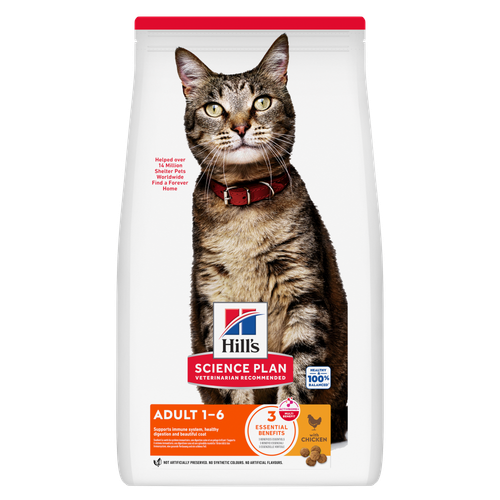
Hill's Science Plan Adult Cat Food with Chicken is a complete pet food, specially formulated with ActivBiome+ Multi-Benefit Technology.
This food is specially formulated to fuel the energy needs of cats during the prime of their life.
Related articles
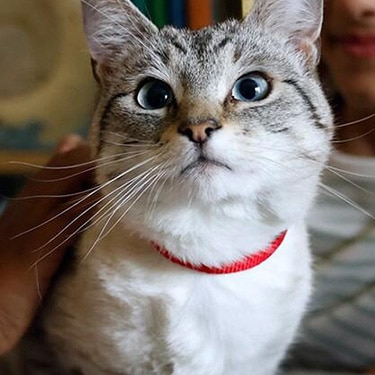
Discover what you can do to spot and support a sensitive cat stomach. See what routines and food you can implement to help your cat be happy and healthy.

When learning how to train your cat, you'll start with very basic first steps that both reward good behavior and discourage the bad.
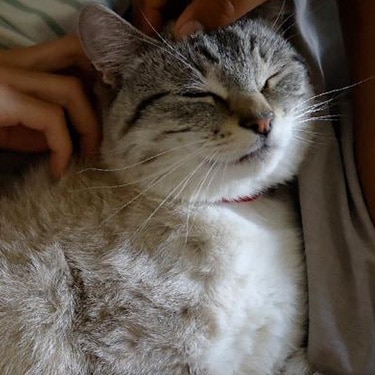
Find out about how you can support your cat's digestion to boost overall health. Diet is key to a long and happy life for your cat, so discover what you can do.
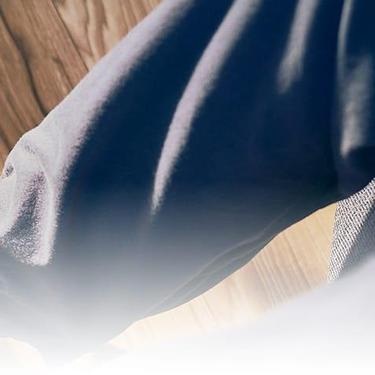
Discover which cat toys games your feline friend might like, and how they are great sources of exercise. Explore our library of articles to learn more.

Put your cat on a diet without them knowing
Our low calorie formula helps you control your cat's weight. It's packed with high-quality protein for building lean muscles, and made with purposeful ingredients for a flavorful, nutritious meal. Clinically proven antioxidants, Vitamin C+E, help promote a healthy immune system.
Put your cat on a diet without them knowing
Our low calorie formula helps you control your cat's weight. It's packed with high-quality protein for building lean muscles, and made with purposeful ingredients for a flavorful, nutritious meal. Clinically proven antioxidants, Vitamin C+E, help promote a healthy immune system.

